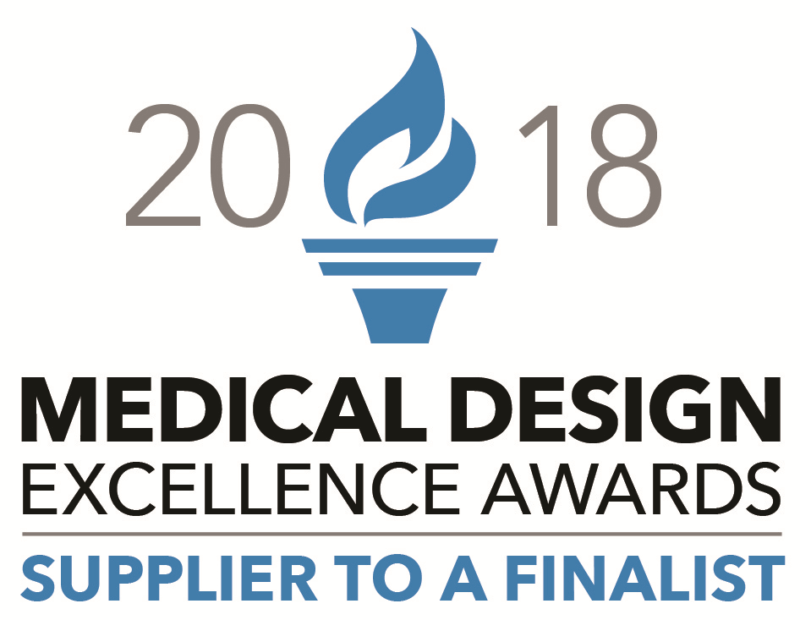
02 Jul MDEA Megatrends & Musings
Another successful trip up to MD&M (Medical Design & Manufacturing) East is in the books. The exhibition is the go-to event for medical device innovators to shop the best in specialty vendors. You can be sure to find specialists in sterilization, packaging, batteries, contract manufacturing, materials such as nitinol, and circuit board fabrication just to name a few – from service providers to OEM component vendors.
We like to send at least one team member each year to check in with the many vendors with whom we’ve developed relationships, and it was great to see the folks at Lee Company, Protolabs and Sunstone.
The event includes an awards banquet honoring the best in medical device innovation for the year – the Medical Device Excellence Awards, MDEA’s. It’s The Oscars for us MedTech folks! This year, our client Dentsply Sirona was nominated for an MDEA award for the Digit Power Dispenser. Dentsply didn’t win this year, but they won silver back in 2014 for the prior generation device we helped them design. This was actually the third time in five years that a Key Tech product was nominated. In addition to the two Dentsply accolades, our client GenMark won a silver in 2016 for ePlex.
While I enjoyed refreshments with others from Dentsply Sirona during the ceremony, the nominees really hammered home some mega-trends in the MedTech industry worth sharing:
- Infection Prevention is King – In the value-based healthcare systems of today, infection must be prevented to avoid additional costs related to those complications. The MDEA “Reader’s Choice” Award went to Prescient Surgical’s CleanCision, a neat wound retraction and protection system originally developed at the Stanford BioDesign Innovation Fellowship It was the first in a new FDA device class that retracts a surgical incision and consistently irrigates wound edges with fluid therapy to prevent wound contamination. Another product, MediClear PreOp is an antimicrobial adhesive that is placed over a surgical site before incision, to act as a barrier and limit the risk of infection. These products open up a whole new category of ideas to improve the odds that infection is prevented.
- Be Laser-Focused on User Needs – With the 62366 usability standard, it’s now well known that a methodical, usability engineering process must be followed in medical device development. Following the process is one thing, but empathizing with the user to dramatically change the use case and use environment is another. The Willow Breast Pump is a step-change in usability and ease of use for nursing mothers over the status quo. The miniaturized, compact design allows women to more comfortably nurse on the go, rather than in a dark room, tethered to a loud breast pump. Before prototyping, it’s imperative to triple check what the user actually needs and wants before incrementally improving a known solution.
- Who Needs Humans? – Enter Equashield’s Pro Pharmacy Robot, an award nominee that completely removes the need for human hands when manually compounding hazardous drugs. This eliminates the risk of errors within a hospital pharmacy, and likely increases throughput when needed. Expect more fully automated platforms in the future, as robotics capabilities of component vendors and AI algorithms evolve over the coming years.
- Chronic Disease Care is Best Treated at Home – The eNeura sTMS mini and Podimetrics Remote Temperature Monitoring System were nominated in the Rehabilitation and Assistive Technology Products category. Both are intended to be used in home environments to treat migraines and inflammatory foot diseases respectively. Look for more home-healthcare products, installed in a connected ecosystem, to treat more and more chronic diseases to keep patients out of the hospital.
The MDEA’s Ceremony is a great annual event to celebrate innovative platforms that greatly benefit patients. What struck me at the end of the show, was the highlighting of all the service providers that helped contribute to each products’ success. For the MedTech industry to continue to advance, medical device OEM’s must continue to be experts in understanding their markets and identifying opportunities for innovation. Then they should utilize external vendors such as Key Tech, as needed, to think outside the box to uncover unique solutions to those opportunities and execute on them to market.
To brainstorm your next market opportunities, contact us at TalkToUs@keytechinc.com.
- 6 Tips to Accelerate MedTech Time To Clinical Data - November 21, 2019
- AACC Thoughts – Determining the Level of Automation for your Diagnostic Assay - August 28, 2019
- MDEA Megatrends & Musings - July 2, 2018


